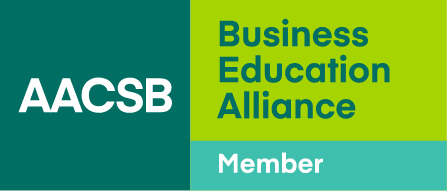Why Business Schools Must Prioritize Public Impact
- Globally, universities are dealing with an erosion of public trust and a loss of federal funding. To reverse the trend, academics must show how their research provides value to society.
- Scholars can highlight the public benefit of their research by translating their findings for outlets that reach business practitioners and decision-makers, as well as for outlets consumed by policymakers and commentators.
- Universities can encourage faculty to broaden their audiences by rewarding work with practical relevance, offering training and skill development, and providing mentorship and peer support.
Across the world, higher education is facing a reckoning. In the U.S., academia contends with historic threats of declining public funding, political interference, and growing public skepticism.
Similar dynamics are unfolding globally, from constraints on academic freedom in Hungary and China to distrust of science in Brazil to nationalist pressures on research agendas in India, Netherlands, and the U.K. These trends point to a broader erosion of confidence in the academic enterprise.
For decades, many scholars believed that rigorous research “spoke for itself.” But as public trust diminishes, it’s increasingly clear that academics also must speak up for their work, articulating its value and its relevance to the communities their institutions were founded to serve.
A Slow Decline, a Sudden Wake-Up Call
The public’s fading appreciation of academia is a trend that has been unfolding for years. Since 2008, public universities in the U.S. have experienced an average 20 percent reduction in state funding per student, according to the Center on Budget and Policy Priorities. Entire disciplines have been diminished. More than 650 foreign language programs closed between 2013 and 2016 alone, according to the Modern Language Association. Meanwhile, an article in The Atlantic references U.S. Department of Education figures showing that the number of undergraduate history majors declined by 45 percent from its 2007 peak.
Recent actions have intensified the threat. Several prominent U.S. colleges, including Harvard, Princeton, Columbia, and the University of Pennsylvania, have become political targets, leading to funding freezes and other policy shifts that could undermine entire institutions. Proposed cuts of 40 percent to the National Institutes of Health and 55 percent to the National Science Foundation are further jeopardizing thousands of research projects.
These developments have prompted many in higher education to reflect on their efforts to engage public audiences over the years. As one University of Michigan public health researcher recently acknowledged, “I deeply regret not doing more as a researcher until now to share the goodness, humanity, and impact of our work with the American public. I hope it’s not too late.”
Facts alone don’t persuade, a point that has been emphasized by leaders from across the academic and public spheres, including science historian Naomi Oreskes and Pulitzer-winning science journalist Ed Yong. Unless academics communicate their insights in ways that resonate beyond scholarly circles, they risk being overlooked, or mistrusted, by the very people they aim to serve.
What This Means for Business Schools
To date, funding cuts and governance interventions have been felt most acutely in fields such as public health, social science, and the humanities. But there is no reason to expect that business schools will remain exempt from aggressive public and political scrutiny.
In fact, the criticisms of business academia have been simmering for years. Business research has been widely faulted for its limited real-world relevance, insular publication practices, and disconnect from the day-to-day challenges faced by practitioners.
Unless academics communicate their insights in ways that resonate beyond scholarly circles, they risk being overlooked, or mistrusted, by the very people they aim to serve.
As Warren Bennis and James O’Toole noted in a May 2005 article in Harvard Business Review (HBR), “Much of the research produced by business schools today is, by any reasonable standard, irrelevant to practitioners.” They quote one CEO describing academic journals as “a vast wasteland from the point of view of practitioners.”
Over time, these criticisms have grown more pressing. In an era of increased demand for accountability and demonstrable public value, business schools may well become the next target of cultural, financial, and political backlash. That’s particularly true if they continue to prioritize academic insularity over societal relevance.
There is a path forward. Many business professors have succeeded in contributing to both academic scholarship and managerial practice. To understand what sets them apart, I interviewed more than a dozen such scholars for an article in Management and Business Review. All of them had published repeatedly in outlets such as HBR and MIT Sloan Management Review, and their ideas had been widely adopted by executives.
What stood out was not just their ideas, but their communication skills. While many had never been trained to write for nonacademic audiences, they had learned how to translate rigorous research into tools that practitioners could use. If business schools want to strengthen their relevance, more professors will need to develop similar skills.
Building the Capacity for Engagement
Even more important, universities will need to assume some institutional responsibility for communicating research impact. Many business schools rely on professional communications teams to manage external engagement, but these teams often orient their efforts around the “four R’s”: building the school’s reputation, focusing on student recruitment, cultivating donor interest to boost revenue, and positioning the school in competitive rankings.
While valuable, these priorities do not necessarily support the translation of faculty research into actionable insights for external audiences. To help faculty develop practitioner-oriented work and ensure it reaches the right readers, schools need to understand the role of paid, owned, and earned media.
Paid media includes advertorials or sponsored content in trade publications. These placements can raise visibility, but the “paid for” status can raise questions of credibility.
Owned media, on the other hand, refers to school platforms such as Rice University’s Rice Business Wisdom, the University of Minnesota’s Discovery at Carlson, and the University of Virginia’s Ideas to Action. These outlets offer institutions control over messaging and alignment with priorities, but often reach only internal or alumni audiences.
To secure visibility for our research, we must build both faculty capacity and institutional strategies for public engagement. Otherwise, our most valuable insights might never leave the walls of the academy.
Earned media, however, is often the most influential. When faculty insights are featured in trusted outlets such as The Wall Street Journal, HBR, and Forbes, and on digital platforms such as Bloomberg.com, the ideas gain third-party credibility and reach the decision-makers, managers, and stakeholders who aren’t reading academic journals.
To secure this kind of visibility for our research, we must build both faculty capacity and institutional strategies for public engagement. Otherwise, our most valuable insights might never leave the walls of the academy. If the public never sees the real value we provide, business schools will be vulnerable to the kind of biased criticism and political targeting that has already begun reshaping other disciplines.
Expanding Beyond Traditional Outlets
When faculty research appears in outlets such as HBR and Bloomberg, it reaches a professional audience that spans industries, regions, and political affiliations. These readers are decision-makers in nonprofits, startups, family businesses, and multinational corporations, and their actions often have a deep influence on communities and economies.
Still, in today’s climate, it’s important for business schools to prove their value to broader public audiences, including policymakers, media commentators, and constituents who might not engage with traditional business media. Some academics have done this effectively by widening the channels they use.
For example, Amanda Kass, a public policy scholar at DePaul University, conducts research on municipal pensions, a topic often seen as niche or technical. To bring it into the public conversation, she has written op-eds in the Chicago Tribune, spoken on public radio, and appeared in regional news segments that reached both city officials and local voters. Her research has helped inform budget discussions in real time. DePaul’s public affairs office supported this outreach by helping to position her expertise and facilitate media engagement.
Business school faculty from across disciplines are also stepping into this role. Douglas Irwin, a professor at Dartmouth College’s Tuck School of Business, regularly writes op-eds for The Wall Street Journal and The New York Times, offering timely perspectives on U.S. trade policy that are grounded in academic research. Sandra Matz, a professor at Columbia Business School, uses platforms such as podcasts and public radio to translate her research on psychology, data, and decision-making into practical insights for professionals. For example, she has appeared on both the podcast “Outthinkers” and the NPR show “Hidden Brain” to discuss how algorithms shape business practice.
Similarly, Derek Horstmeyer, a professor of finance at George Mason University’s Costello College of Business, collaborates with his master’s students on ad hoc research projects that fuel a steady stream of practitioner-oriented articles in The Wall Street Journal. These have included actionable insights on topics ranging from strategies for investing in exchange-traded funds to currency impacts on equities.
And public engagement doesn’t have to begin on a national or global stage. In fact, some of the most accessible opportunities exist locally. Business schools can support faculty who want to speak at regional chambers of commerce, serve on local business development committees, or contribute to economic development initiatives in their own communities.
Many universities already have business outreach or development units that would welcome such faculty participation. These settings not only offer meaningful avenues for impact, but also serve as low-risk training grounds where professors can refine their ability to communicate with practitioners. In fact, my own public speaking career got started in just these types of venues because my college treated them as faculty service contributions and gave me credit for each speech. For faculty interested in reaching broader public platforms, these local engagements can provide both experience and credibility.
Supporting Impact Through Institutional Strategy
If business schools want their faculty to engage more extensively with external audiences, they’ll need to shift from passive encouragement to intentional strategies. This will require them to build structured support by taking several steps:
Recognizing and rewarding work with practical relevance. When administrators include public scholarship as a factor in promotion reviews, research awards, and annual evaluations, faculty will understand that societal impact is valued alongside academic rigor.
Practitioner impact helps affirm the broader value of business schools in an era when public support for higher education can no longer be taken for granted.
Offering training and skill development. Workshops, coaching, and seminars help faculty translate their academic work into practitioner formats such as podcasts, executive briefings, TED Talks, and public addresses. Training might include guidance on storytelling, headline writing, case writing, and media engagement and could be delivered in partnership with journalism schools or professional communicators.
Providing mentorship and peer support. By pairing experienced public scholars with faculty looking to step beyond academic journals, institutions can foster communities of practice that share advice on pitching, crafting public messages, and navigating external audiences. Schools also might invest in translational writing and editorial support, employing editors or hiring freelance writers to help shape faculty research into polished, accessible pieces.
Leveraging institutional platforms. Owned media outlets allow faculty to share practitioner-oriented insights that might be best suited for internal, regional, and alumni audiences. But sometimes such content crosses into the earned media space. For example, when research by Long Chen and June Woo Park was featured on George Mason’s website, it caught the attention of the Daily Mail Online and led to further coverage across Europe.
Training faculty in practitioner engagement and research design. Schools should encourage faculty to co-create research with practitioners through field-based inquiry and design thinking. When scholars learn how to work with business professionals, they produce research that is not only more applicable, but also more durable and impactful.
By supporting faculty in these ways, schools amplify both the credibility and the visibility of business scholarship at a time when public relevance is no longer optional.
Why It Matters Now
Practitioner impact does more than elevate the reputations of individual professors. It helps affirm the broader value of business schools in an era when public support for higher education can no longer be taken for granted.
This does not mean every faculty member must become a public intellectual, nor that all research must be immediately accessible to lay readers. Much of the scholarly enterprise remains valuable even if it serves more specialized audiences. But schools should actively empower those faculty who are ready and willing to bring ideas from the academy into the public square.
Once, inaction might have seemed safe. Today, it looks increasingly risky.






